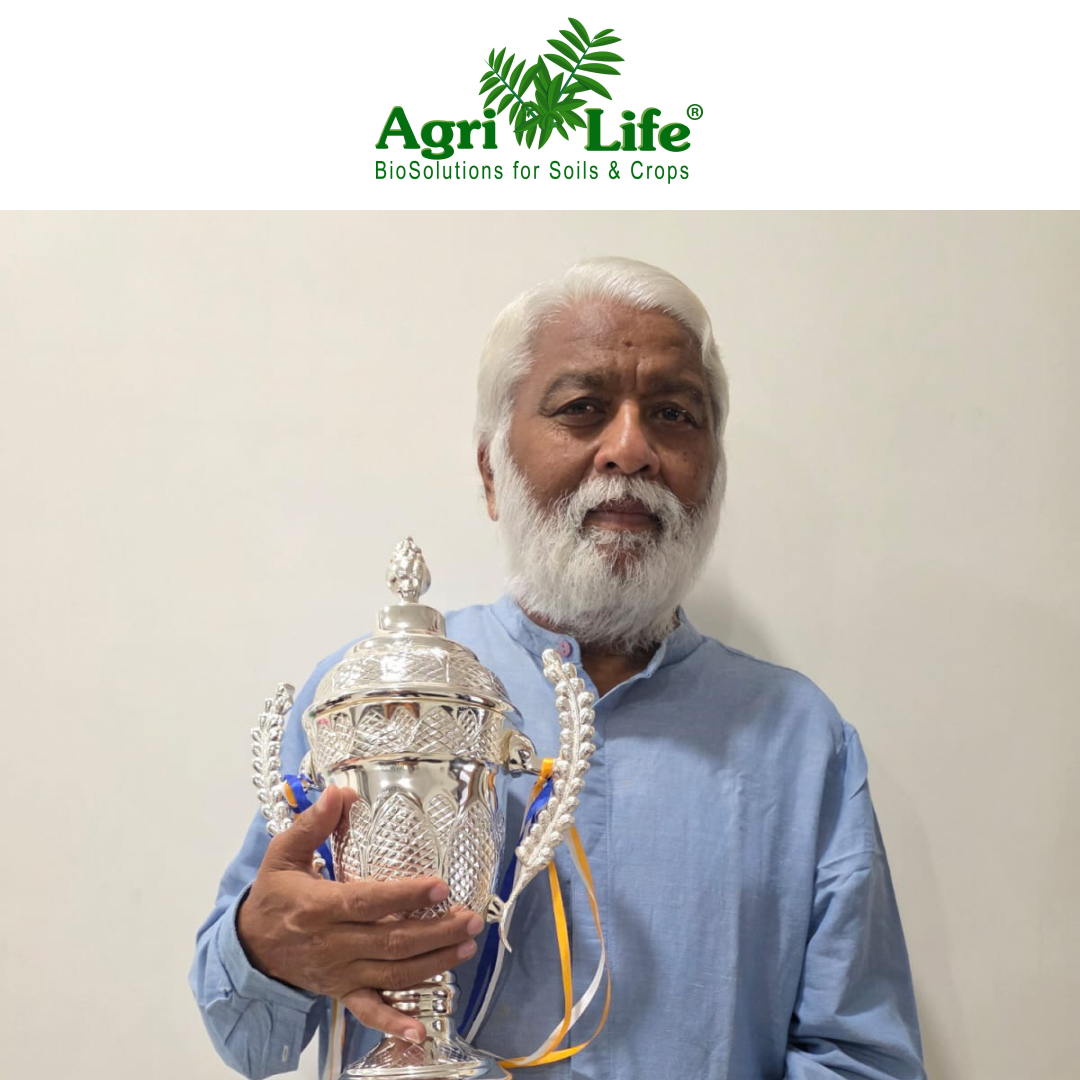
Natural Plant-Based Herbicide Eliminates Resistant, Tough-to-Control Weed
Harpe Bio offers the first significant, effective solution to control weeds in the bioherbicide market, utilizing natural active ingredients found in plant extracts. With little to no risk to human health or the environment (EPA, 2023), these new modes and sites of action support farmers in overcoming weed resistance and are easy to use. The company has developed a new, natural, plant-based non-selective herbicide platform that can be tailored for use as pre-emergent weed prevention or effectively against a broad spectrum of grass and broadleaf weeds. These formulations can be used alone or in combination with synthetic chemical herbicides to effectively eliminate resistant and tough-to-control weeds.
The active ingredients in Harpe Bio formulations are derived from plant extracts including many found in the wide variety of Mentha (mint) plants. These active ingredients are found in nature and used as key ingredients in consumer products such as mouthwash, toothpaste, gum, as well as those used for pharmaceutical and medicinal purposes.
Harpe Bio formulations work differently than other herbicides on the market. They feature multiple modes and sites of action, unlike today’s synthetic herbicide chemistries that target weeds in a singular way with one site, one mode of action to which more than 500 weeds have adapted and become resistant.
These formulations address economic, societal, and regulatory needs while being easy to use, mix and spray without concerns. The Harpe Bio platform is futuristic with tailored formulations for precision agriculture, like smart sprayers and drone applications. Ingredients in these formulations are listed under the U.S. Environmental Protection Agency 25(b) list of compounds that pose little to no risk to humans or the environment and thus requiring no further federal-EPA regulatory review.
Harpe Bio is also developing the pathway for herbicide-tolerant cropping systems. Proving the possibilities of crops tolerant to Harpe Bio applications will further expand the commercial opportunity of the technology while providing new and expanded tools for farmers.
Methodology
Harpe Bio researchers initially screened a series of plant extracts to assess weed and plant phytotoxicity. The plant extracts worked to damage the plants which were sprayed pre- and post- emergent. Mentha species extracts and the unique compounds found within worked better for control and suppression of weeds and plants pre- or post-emergent. Plant model species used were annual ryegrass (Lollium rigidium) Timothy (Phleum pratense) pigweed (Amaranthus sp.) and chamomile (Matricaria chamomilla). Control and suppression were documented in the lab and early greenhouse trials. Initial spray solutions did not use inert chemical components which help to keep the hydrophobic extracts in solution. Sufficient data was collected to move forward with expanded greenhouse trials and a formulation of extracts was created which exhibited better spray characteristics. After successful results in the lab and greenhouse, Harpe was deployed in field trials across the U.S. The post- and pre-emergence trials were conducted for each location.
The protocol had 10 treatments with four replicates per treatment. Each plot was 5×15 feet in size, or 75 ft2, organized in a randomized complete block design. Each treatment was tank mixed with surfactant to enhance product efficacy. Applications were made using a CO2-powered backpack sprayer, using TeeJet flat fan nozzles at 20-inch spacing under 30 psi at a spray volume of 20 GPA. Prior to applications, plots were assessed for weed cover.
These same assessments were made two days, one week, two weeks, and three weeks post applications, extended PRE control ratings. Percent control of each herbicide, using a visual method where 0 is no control and 100 is complete control for the post-application weed assessments. Instance of weeds in the PRE trial assessed by percent visual establishment of weeds, all plots were weed-free at PRE-spray treatment. All data was entered into ARM and LSD (0.05) calculated to separate treatment means. Weather data was downloaded from the closest weather station to the trial location.
Major Findings
Initial proof-of-concept greenhouse studies were completed internally in 2019 followed by external third-party independent research in Michigan (Michigan Ag Research), that demonstrated Harpe Bio formulations controlled a series of economically important weed species.
In a randomized Complete Block greenhouse trial, weeds/plants were sprayed with Harpe Bio via foliar spray, including Waterhemp (Amaranthus tuberculatus), Palmer Amaranth (Amaranthus palmeri), Horseweed/Marestail (Conyza canadensis), Lambsquarters (Chenopodium album), Large Crabgrass (Digitaria sanguinalis) and Sorghum bicolor (L.) Moench. Weeds and plants were monitored over three weeks to assess the phytotoxicity and control percent versus the non-treated control plants.
Data showed that Harpe Bio treatment controls each of the weeds and plant species. Importantly, Harpe Bio formulations controlled the weeds in a short period of time, whereas many currently used herbicides will take up to 20 days after treatment for control of the weed species.
In another randomized Complete Block greenhouse trial, weeds and plants were sprayed with Harpe Bio in mixtures with Glyphosate or Glufosinate herbicides. Weeds treated via foliar spray included Waterhemp (Amaranthus tuberculatus), Palmer Amaranth (Amaranthus palmeri), Horseweed/Marestail (Conyza canadensis), Lambsquarters (Chenopodium album), Large Crabgrass (Digitaria sanguinalis) and Sorghum bicolor (L.) Moench. Weeds and plants were monitored over three weeks to assess the phytotoxicity and control percent versus the nontreated control plants. Data indicated that Harpe Bio treatments with Glyphosate controlled weeds and plant species faster than using Glyphosate alone. Also, Harpe Bio treatments with Glufosinate controled weeds/plant species faster and more completely than with Glufosinate alone.
Harpe Bio partnered with AgriThority to evaluate selected versions of herbicides in combination with industry standards (STD) under different production scenarios. Two sister protocols were designed to evaluate Harpe/STD performance on seedling weeds 3-5” tall that simulate post- emergent (POST) management settings. These protocols were conducted under non-crop conditions to focus on weed response to the applications. Pre-emergent (PRE) applications were made on bare ground to evaluate the utility of the treatment combinations during stand establishment.
Protocols were conducted in three different regions to measure performance as affected by unique environment and weed population dynamics. These trials were conducted in Indiana and South Dakota where moderate weather conditions allowed for evaluations to be made in early to mid-summer.
At the South Dakota site the soil type was a loam. Harpe Bio was used as a post-emergent treatment in combination with Saflufenacil, an important, recent off-patent chemistry. Figure 2 showcases the post-emergent control of broadleaf weeds and grasses. The primary weed species were lambsquarter, a broadleaf and yellow foxtail, and a grass. In lambsquarter, the Harpe/saflufenacil (29.74%) tank mix showed 88 percent control 3 DAA, while saflufenacil (29.74%) alone showed 73 percent control. The difference was larger at 14 DAA with Harpe/ saflufenacil (29.74%) combo controlling 33 percent, and saflufenacil (29.74%) alone controlling 3 percent. saflufenacil (29.74%) alone showed 0% control of yellow foxtail, with the Harpe/ saflufenacil (29.74%) combo showing 78 percent at 7 DAA and 58 percent control at 21 DAA.
Harpe showed satisfactory performance in the lab, greenhouse, and field trials, working strongly as a standalone product and a partner for current synthetic chemistry as a pre-mix or tank mix. Harpe was effective as both a pre-emergent and post-emergent application for control of grasses and broadleaves. When evaluated against weeds with suspected resistance, Harpe combined with synthetic chemistry overcame the resistance challenges. Enabling Harpe to be used as a tool in multiple settings as a new standalone chemistry and revive older chemistries to control weeds.
Harnessing Nature for Safe, Sustainable and Needed Herbicides
Final formulation advancements, including inert optimization, and encapsulation to improve physiochemical action, will couple the required efficacy with targeted cost of goods. Successful formulation advancements as described will support broader scale adoption as Harpe Bio formulation pricing will align with current synthetic chemistry.
Harpe Bio tailored formulations safely and sustainably address the needs of farmers, the requests of consumers and the demands of our planet. By assisting growers across the world in overcoming weed resistance to produce abundant, healthy crops while strengthening the environment through a reduction in synthetic chemistry, Harpe is poised to support the next phase of agricultural advances.
References
Office of Chemical Safety and Pollution Prevention. (2015, December). Active Ingredients Eligible for Minimum Risk Pesticide Products (40 CFR 152.25(f)). Environmental Protection Agency.







Leave a Reply